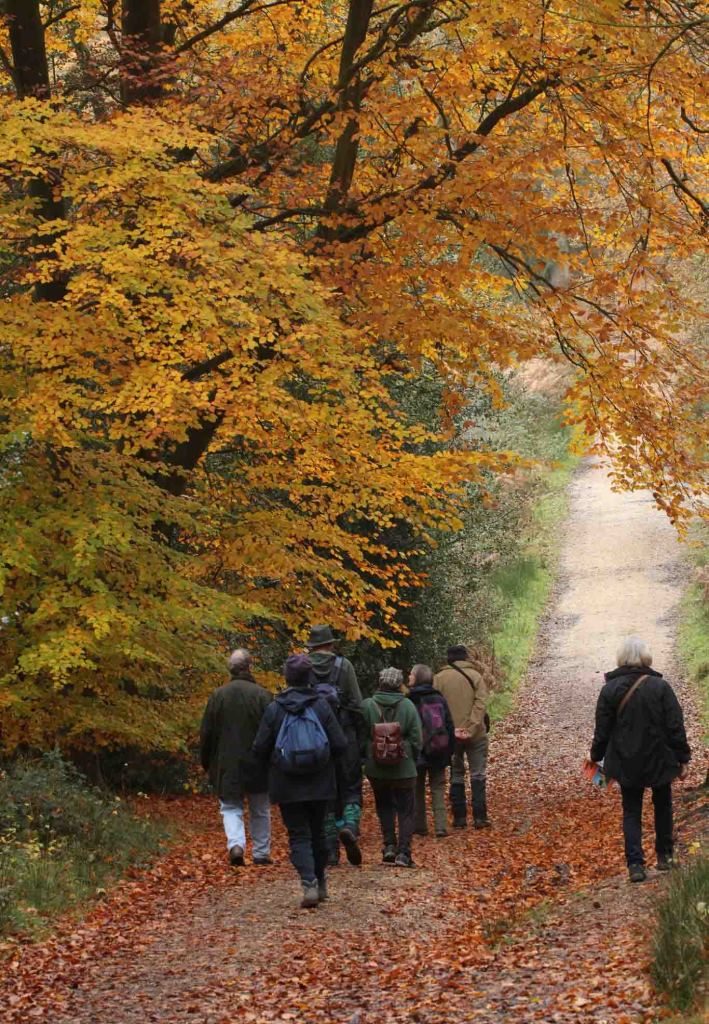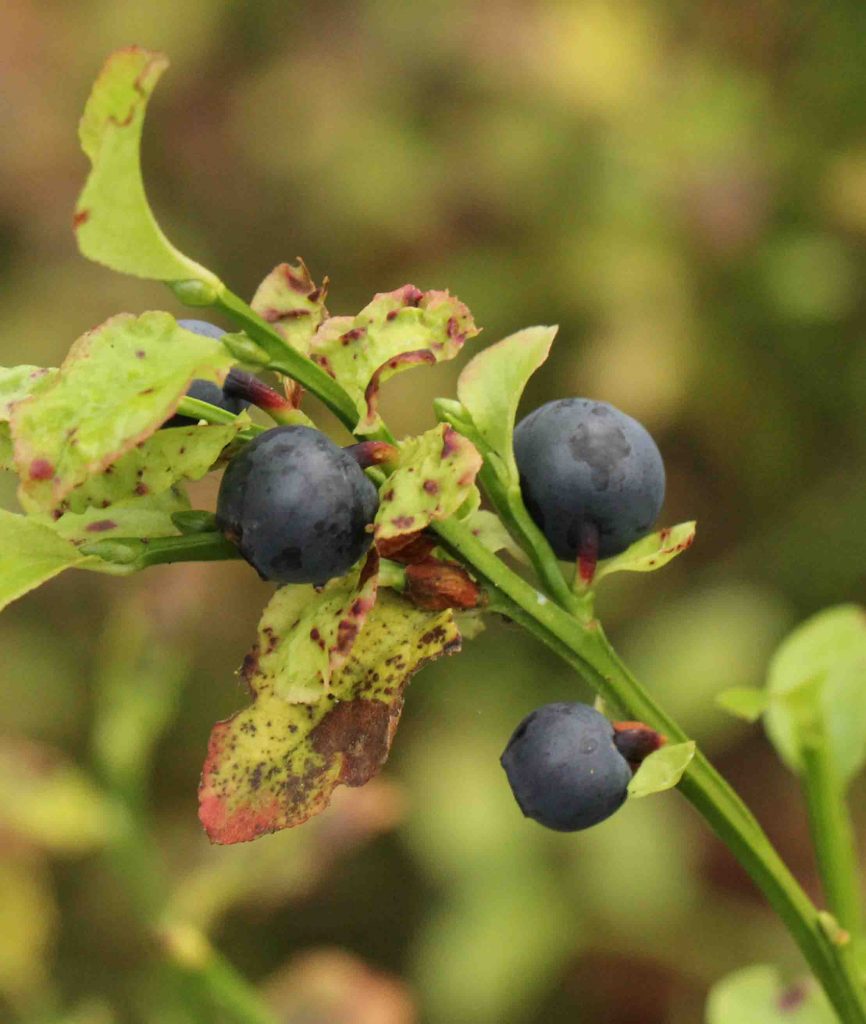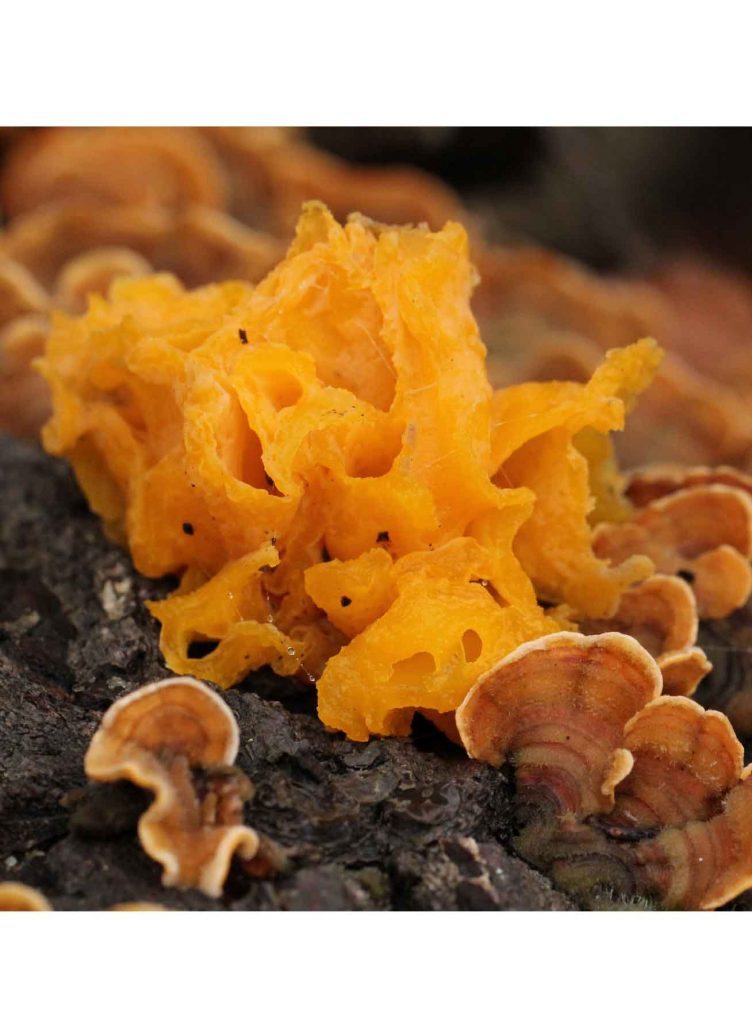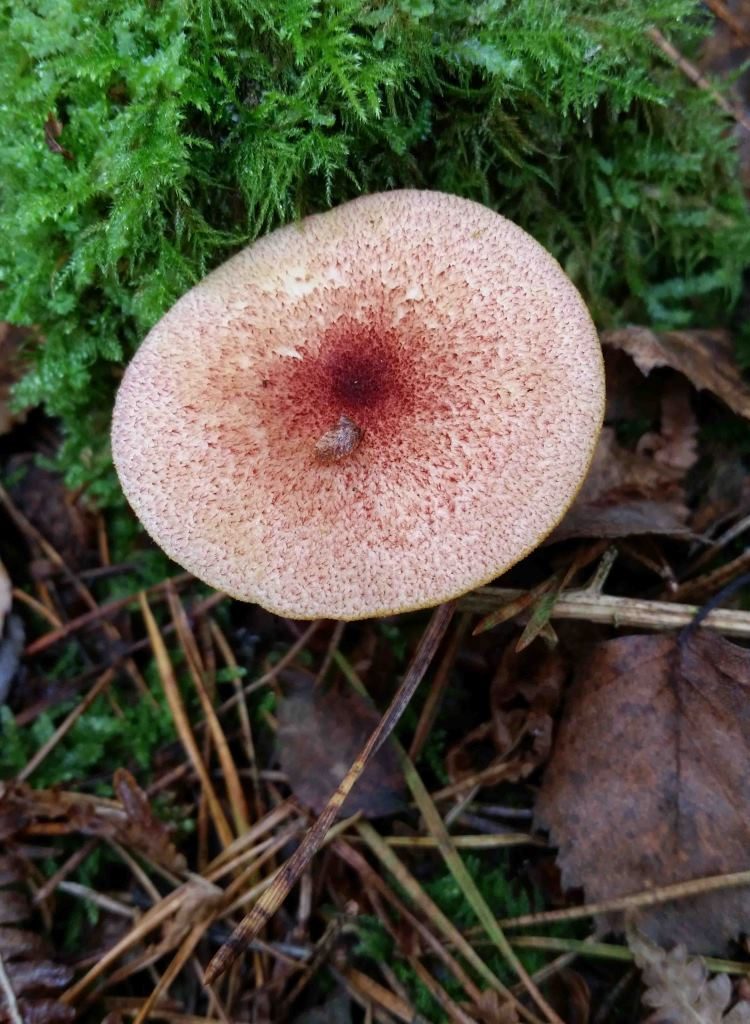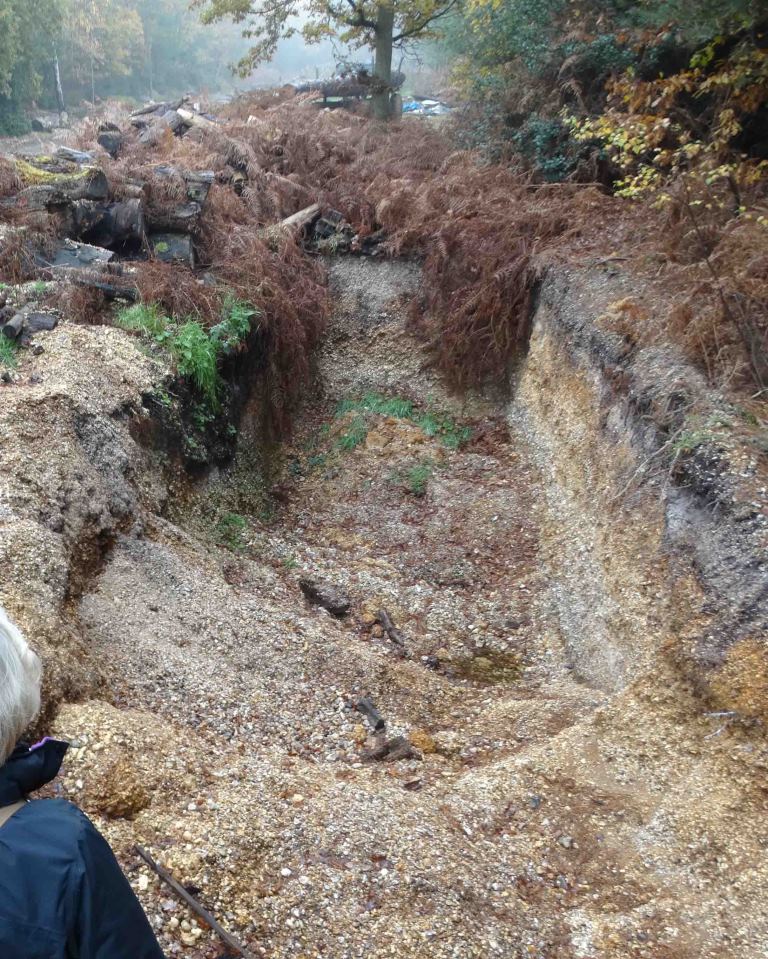The autumn colours were close to their best when Jan and Laurie Haseler led a walk at Benyon’s Inclosure near Silchester on the misty morning of Wednesday 15 November. Starting from the southern end of the woods, the route led northwards along a gravel track through a pine plantation. Bilberry plants below the pines had a good crop of berries. The track dropped steeply down towards a stream and the walk continued along a path which followed the side of the valley. There were big clumps of Hard Fern and a few specimens of Lady Fern. A pair of flies were mating on the dark slimy cap of a Stinkhorn which was growing beside the path. The stream flowed into a lake with a resident flock of Mallards. On the return part of the walk, a Grey Heron flew up from the waterside and a Cormorant was spotted roosting in a tree above the water. The walk continued along the eastern side of the woods, climbing steeply over a ridge, dropping down to an orange stream and then following a gravel track northwards. Various fungi were spotted, including an attractive specimen of Plums and Custard, a pale pink Russula and a group of striking black fungi with white gills which were identified as some sort of Melanoleuca species. The yellow jelly fungus Tremella aurantia was found, parasitising the brackets of Hairy Curtain Crust Stereum hirsutum, which in turn were growing on cut logs.
A little way back from the edge of the track was a deep pit, which exposed the different layers of gravel to a depth of several metres. The Silchester Gravels were laid down about 450,000 years ago, around the time of the maximum extent of the ice sheets across Britain. Different layers of gravel had different sized stones in different coloured substrates. Work has recently started on a new area of gravel extraction in the north-west corner of Benyon’s Inclosure. The site was surrounded by a knee-high, solid fence. Apparently an ecologist has been working in the area, removing amphibians and reptiles, and the fence is there to prevent them returning to the danger zone. The next path led along a drier and more open section. A few of the Bell Heather and Ling plants were still in flower and tufts of Purple Moor-grass were an attractive golden-yellow colour. Further on, a Muntjac deer crossed the path. The route then returned to the main stream valley. Down on the valley bottom were enormous clumps of Greater Tussock-sedge. A flock of Redwings were feeding on the abundant crop of Holly berries in the woods. After passing the lake again, the route ran along a stretch of hedge-lined lane before leading back into the woods. Pale leaves on the ground came from a Whitebeam, a surprise find in such an acid location. Finally, Long-tailed Tits, Coal Tits and Goldcrests were amongst a mixed flock of small birds in the trees near the end of the walk. Everyone then continued to the Calleva Arms for lunch.
Pictures by Ken White, Sue White and Jan Haseler

